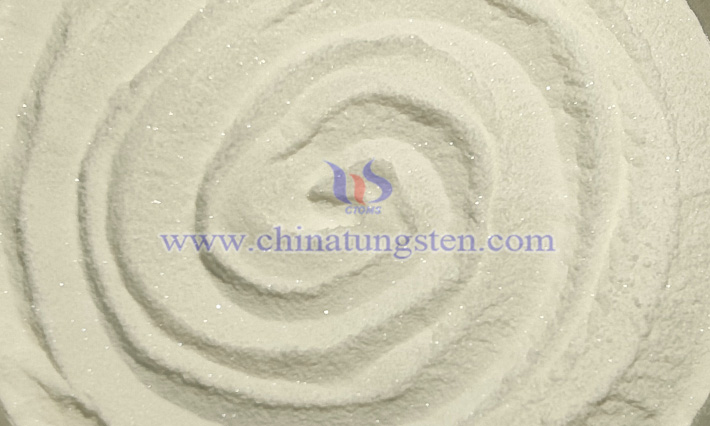Effect of Crystal Structure on the Properties of Ammonium Metatungstate
- Details
- Category: Tungsten Information
- Published on Wednesday, 23 April 2025 15:29
Ammonium metatungstate (AMT), a critical compound of the transition metal tungsten, features a core structure based on the Keggin-type polyacid anion [H₂W₁₂O₄₀]⁶⁻. This anion is formed by 12 WO₆ octahedra connected through corner- or edge-sharing, creating a cage-like structure typically centered by a heteroatom or proton. Stabilized by NH₄⁺ cations and crystal water molecules, this polyoxoanion forms a three-dimensional crystal structure. AMT’s crystal structure is generally monoclinic or triclinic, depending on crystallization conditions such as temperature, pH, and solvent. The crystal structure significantly influences AMT’s properties, including solubility, thermal stability, catalytic performance, and chemical stability. Below is a detailed analysis of these impacts.

I. Impact of Crystal Structure on Solubility
AMT exhibits excellent water solubility (>3,000 g/L at 25°C), which is closely tied to the hydrogen bond network and ionic interactions within its crystal structure. The Keggin-type anion’s surface is rich in oxygen atoms, enabling strong hydrogen bonding with water molecules, which facilitates crystal dissolution. Additionally, the hydrophilic nature of NH₄⁺ cations further enhances AMT’s solubility in water. The amount of crystal water in the structure also affects the dissolution rate: crystals with higher water content have a looser hydrogen bond network, leading to faster dissolution. This high solubility makes AMT an ideal precursor for preparing tungsten-based catalysts and nanomaterials.
II. Impact of Crystal Structure on Thermal Stability
The thermal stability of AMT is influenced by the arrangement of crystal water and the Keggin anion within its crystal structure. Thermogravimetric analysis reveals a stepwise decomposition process:
• 100-200°C: Loss of crystal water.
• 300-400°C: Decomposition of NH₄⁺, releasing ammonia.
• Above 500°C: Collapse of the Keggin structure, forming WO₃.
The number of crystal water molecules and the strength of hydrogen bonds determine the dehydration temperature, while the spatial arrangement of the Keggin anion affects the decomposition temperature. A highly ordered crystal structure typically enhances thermal stability, which is critical for AMT’s application in high-temperature catalyst preparation processes.

III. Impact of Crystal Structure on Catalytic Performance
The Keggin structure endows AMT with excellent catalytic activity, particularly in oxidation and acid-catalyzed reactions. The surface oxygen atoms and tungsten atoms of the Keggin anion serve as active sites, participating in electron and proton transfer processes. The regularity of the crystal structure and the presence of defects, such as oxygen vacancies, significantly influence catalytic activity. For instance, doping with heteroatoms (e.g., vanadium or molybdenum) or lattice defects can alter the electronic structure, enhancing catalytic performance. Additionally, crystal particle size and the exposure of specific crystal facets affect the catalyst’s specific surface area and the accessibility of active sites, further impacting catalytic efficiency.
IV. Impact of Crystal Structure on Chemical Stability
AMT remains relatively stable in acidic or neutral solutions but is prone to depolymerization in strongly alkaline conditions, where the Keggin structure breaks down into mononuclear tungstate ions. This behavior is related to the strength of tungsten-oxygen bonds and the buffering effect of NH₄⁺ cations within the crystal structure. A compact crystal structure with a robust hydrogen bond network reduces the likelihood of depolymerization, thereby enhancing chemical stability. This property makes AMT particularly suitable for acidic catalytic systems, where its structural integrity supports consistent performance.
- Chinatungsten Online: ammonium-metatungstate.com
- CTIA GROUP LTD: en.ctia.group
- Tungsten News & Price: www.ctia.com.cn
- Molybdenum News & Price: news.molybdenum.com.cn
- Tel.: 86 592 5129696; Email: sales@chinatungsten.com